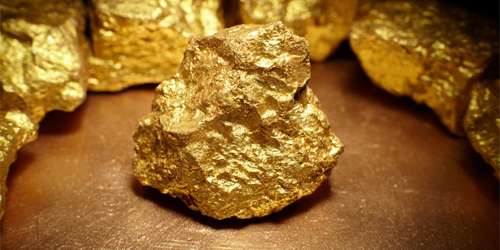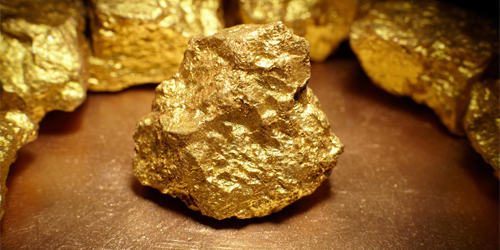Golden Mystery Solved
Gold’s lustrous color is due to unusually strong relativistic effects. The same effects also complicate theoretical computations of gold’s electronic properties. Indeed, theorists working on this precious metal have struggled for decades to resolve a discrepancy between their predictions and experimental observations. New work has solved this problem by calculating the electron correlation contribution to an unprecedented level of precision that incorporates “pentuple” interactions between five electrons.
Calculating an atom’s electronic properties is never easy, especially for heavy atoms whose strong Coulomb potential implies relativistic energies for its electrons. In gold’s case, relativistic effects cause a smaller than expected gap between the and orbitals, which is why gold absorbs blue frequencies and reflects a yellowish tint. But other aspects of gold are more difficult to explain. Calculations of the ionization energy (energy to remove an electron) and electron affinity (energy to add an electron) have consistently underestimated the experimental values by tens of milli-electron-volts.
Peter Schwerdtfeger from Massey University Auckland in New Zealand and his colleagues have performed precise calculations for gold. Their model accounts for relativistic effects, as well as for the contributions from electron correlations and quantum electrodynamics. Electron correlations embody all the electron-electron interactions that occur in a multielectron atom. Previous studies have dealt with electron correlations between the 79 electrons in gold, but typically they have only gone as far as triple interactions between three electrons. Schwerdtfeger’s team extended these calculations to quadruple and pentuple interactions. By doing so, they reduced the discrepancy in the ionization energy and electron affinity to just a few milli-electron-volts —a factor of 10 improvement over past results. The methodology could be applied to even heavier elements.
This research is published in Physical Review Letters.
–Michael Schirber
Michael Schirber is a Corresponding Editor for Physics based in Lyon, France.





